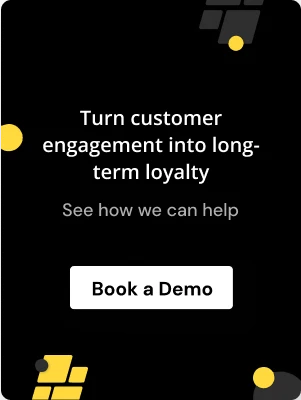.avif)
.avif)
Introduction
In the cutthroat world of e-commerce, customer acquisition and retention are paramount for business success. One powerful strategy that can yield dividends on both fronts is implementing an enticing referral program. By incentivizing your existing loyal customers to spread the word about your brand, you can tap into the potent force of word-of-mouth marketing and attract a steady stream of new customers through trusted recommendations.
Key Components of an Effective Referral Program
1. Clear and Compelling Rewards: Offer rewards that genuinely excite and motivate your customers to participate. Popular options include discounts, free products, loyalty points, or cash incentives. Ensure the rewards align with your target audience's preferences and provide tangible value.
2. Easy Sharing Process: Simplify the referral process by providing easy-to-use sharing tools, such as pre-populated email templates, social media share buttons, or unique referral links. Remove any barriers that could discourage customers from participating.
3. Dual-Sided Incentives: Consider offering incentives to both the referrer and the referred customer. This dual-sided approach can increase the likelihood of successful referrals and foster a stronger sense of community among your customers.
4. Seamless Integration: Integrate your referral program seamlessly into your existing customer experience. Make it easily accessible and visible throughout the customer journey, from the checkout process to post-purchase follow-ups.
5. Automated Tracking and Reporting: Implement a robust tracking and reporting system to monitor the performance of your referral program. This will allow you to measure its effectiveness, identify areas for improvement, and make data-driven decisions.
Did you know?
According to a study by Friendbuy, referred customers have a 25% higher conversion rate and a 16% higher lifetime value compared to non-referred customers.
Different Types of Rewards and Incentives
1. Discounts and Promotional Offers: Offer exclusive discounts or promotional codes to referrers and referred customers. These incentives can be applied to future purchases, encouraging repeat business and fostering customer loyalty.
2. Free Products or Services: Reward referrers and referred customers with free products, services, or upgrades. This can be particularly effective for subscription-based or recurring revenue models.
3. Loyalty Points or Cash Rewards: Integrate your referral program with an existing loyalty program by offering points or cash rewards for successful referrals. This reinforces the value of customer loyalty and advocacy.
4. Charitable Contributions: Appeal to socially conscious customers by offering to make a charitable donation for each successful referral. This approach can resonate with customers who value corporate social responsibility.
5. Exclusive Experiences or Privileges: Provide referrers and referred customers with exclusive experiences, such as early access to new products, VIP events, or personalized services. This can create a sense of exclusivity and enhance the customer experience.
Promoting and Marketing Your Referral Program
1. Email Marketing: Leverage your email marketing campaigns to promote your referral program to existing customers. Include referral links, highlight the rewards, and share success stories to encourage participation.
2. Social Media Integration: Integrate your referral program with social media platforms, making it easy for customers to share referral links and incentives with their networks. Encourage social sharing through contests or incentives.
3. Website and In-App Promotion: Prominently display your referral program on your website and within your e-commerce application. Use banners, pop-ups, or dedicated landing pages to increase visibility and drive participation.
4. Influencer Marketing: Collaborate with influencers or brand ambassadors who align with your target audience. Leverage their reach and credibility to promote your referral program and incentivize their followers to participate.
5. Omnichannel Approach: Promote your referral program across multiple channels, including email, social media, in-store displays (if applicable), and customer support interactions. Consistent messaging and visibility can increase awareness and participation.
Conclusion
By crafting an irresistible referral program that rewards loyal customers and provides compelling incentives, you can tap into the power of word-of-mouth marketing and drive sustainable growth for your e-commerce business. Remember to continuously monitor, analyze, and optimize your referral program to ensure its long-term success.
FAQs
Start Building Customer Retention That Lasts




%201.webp)



